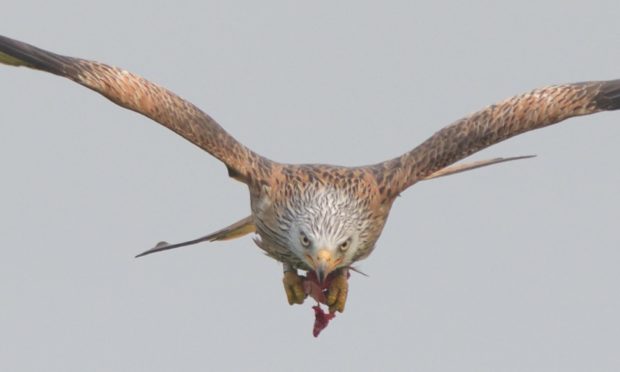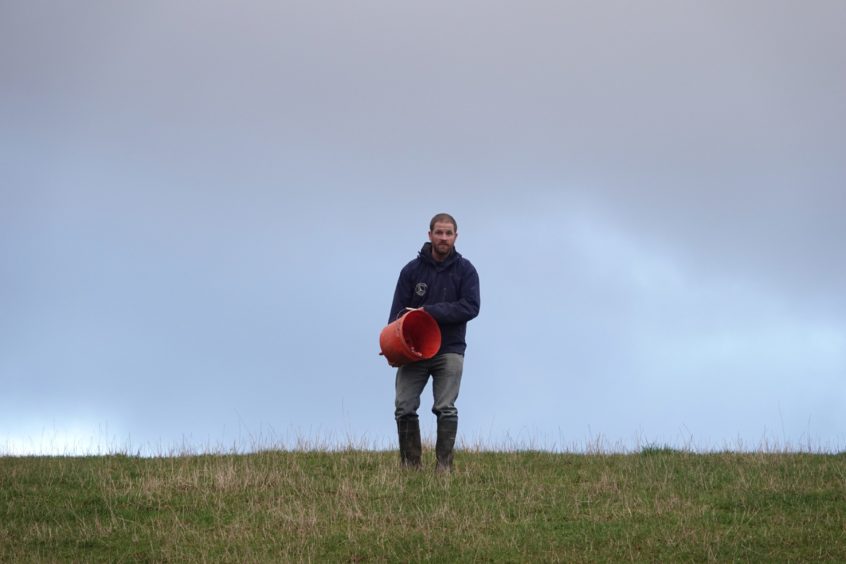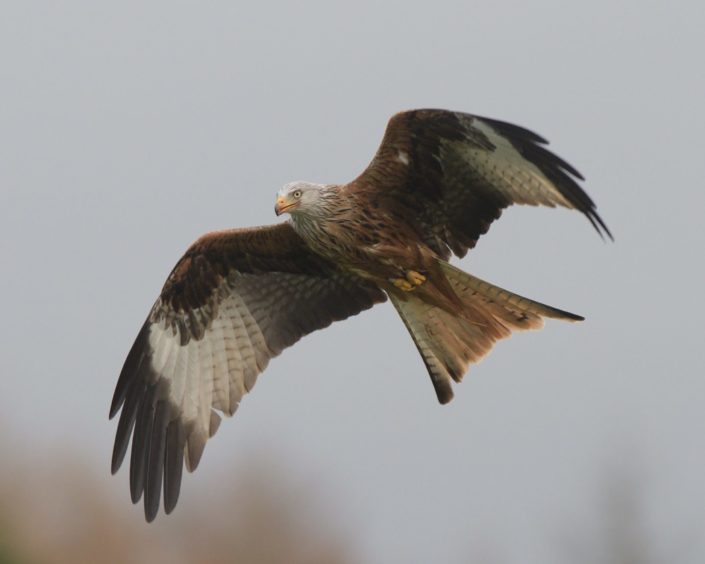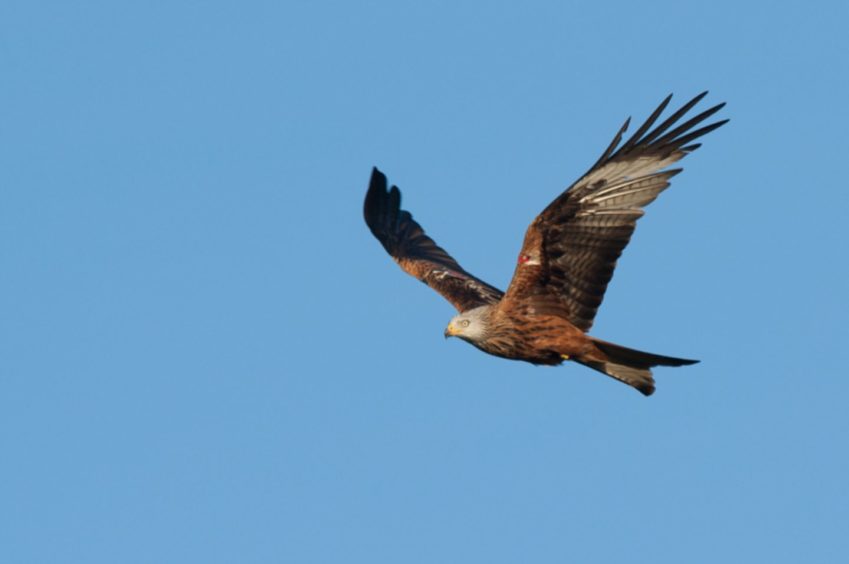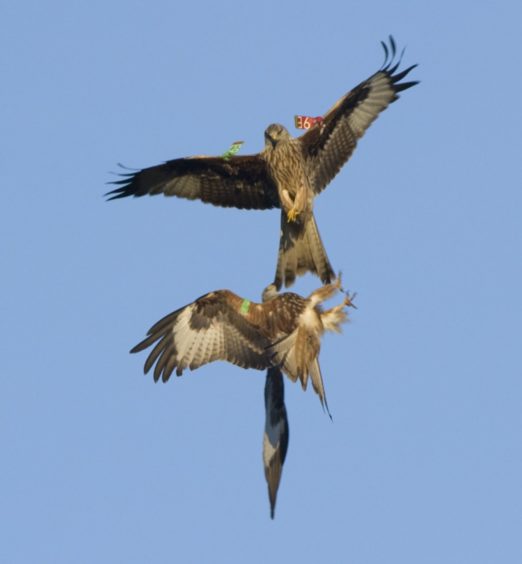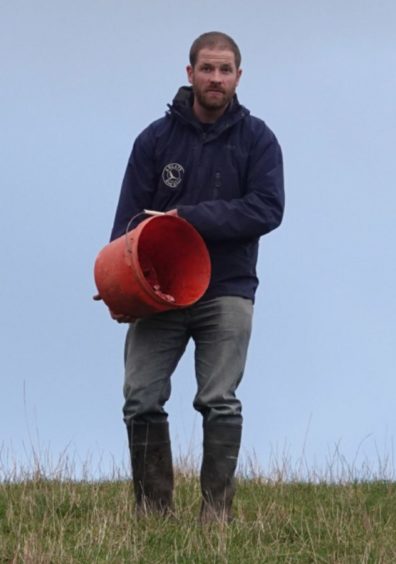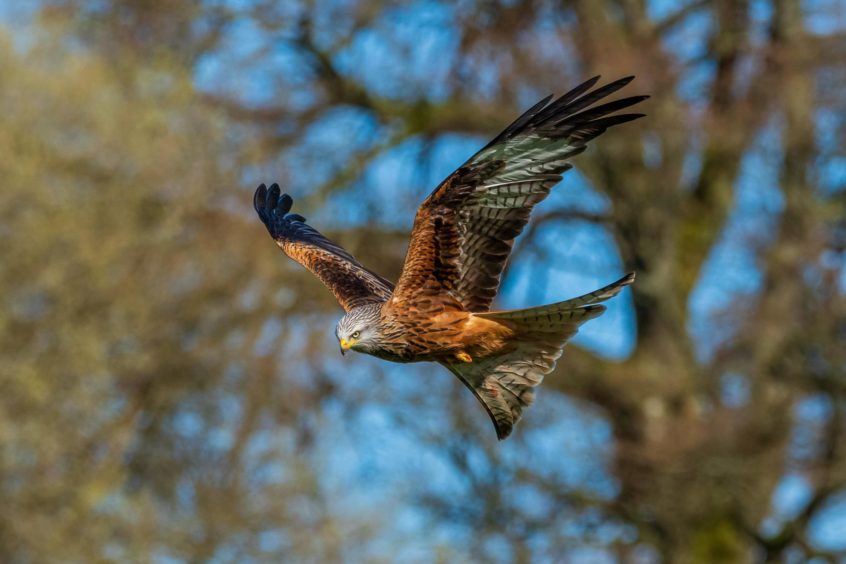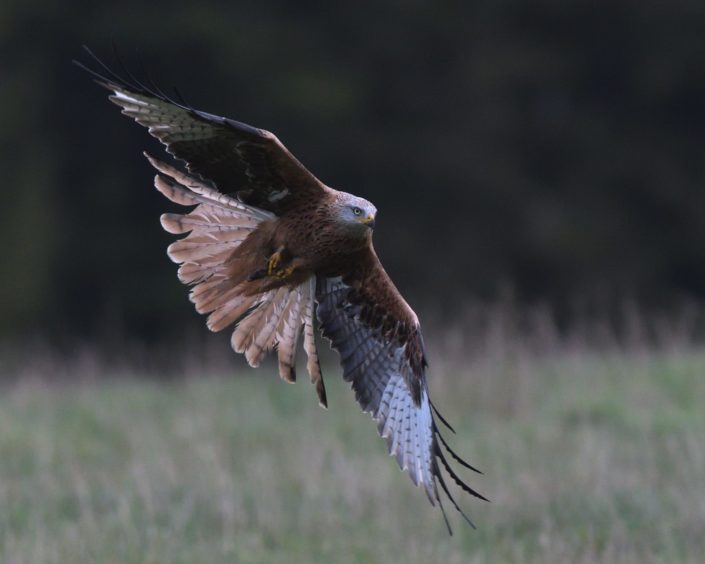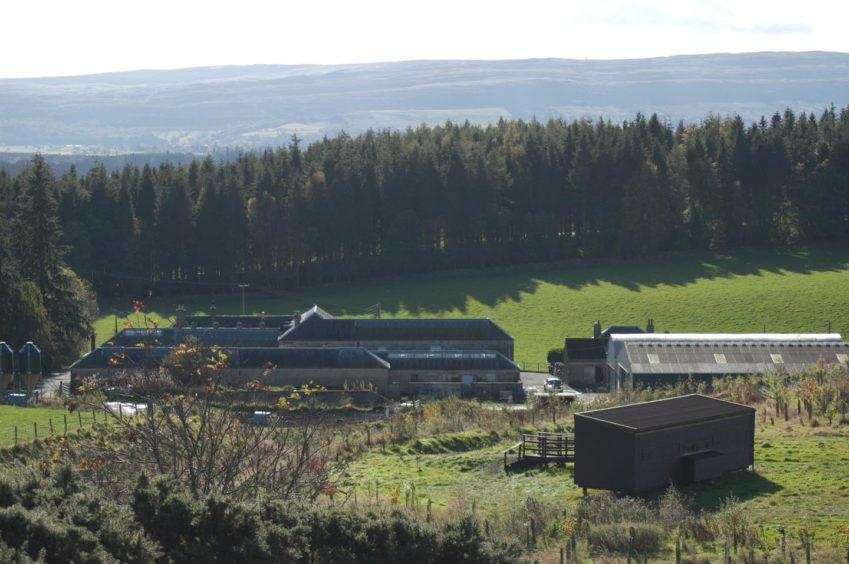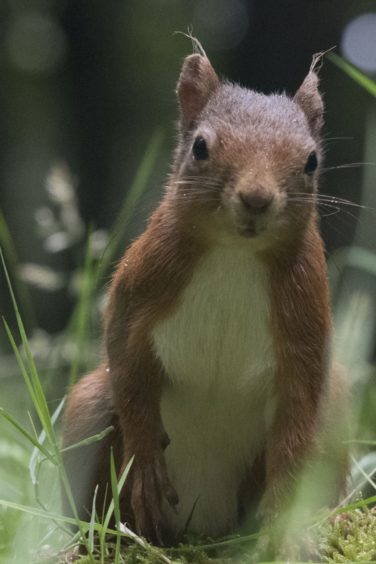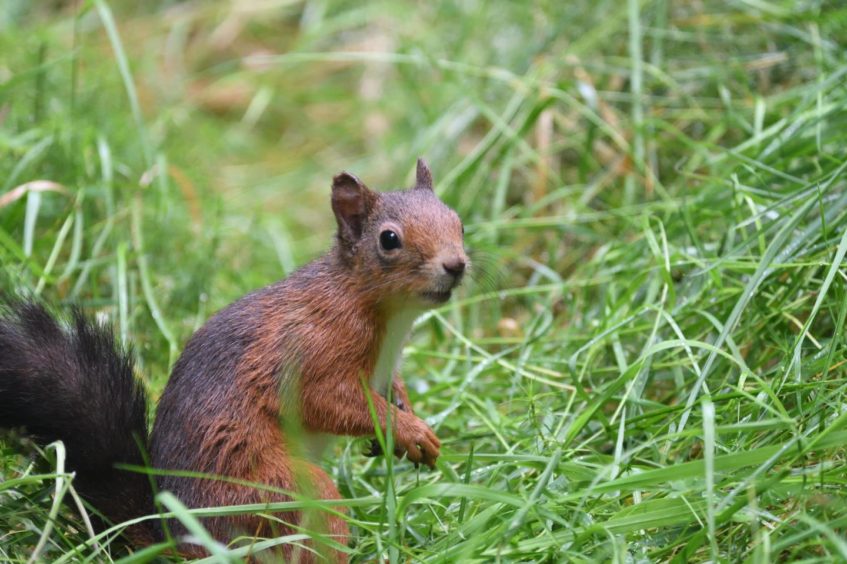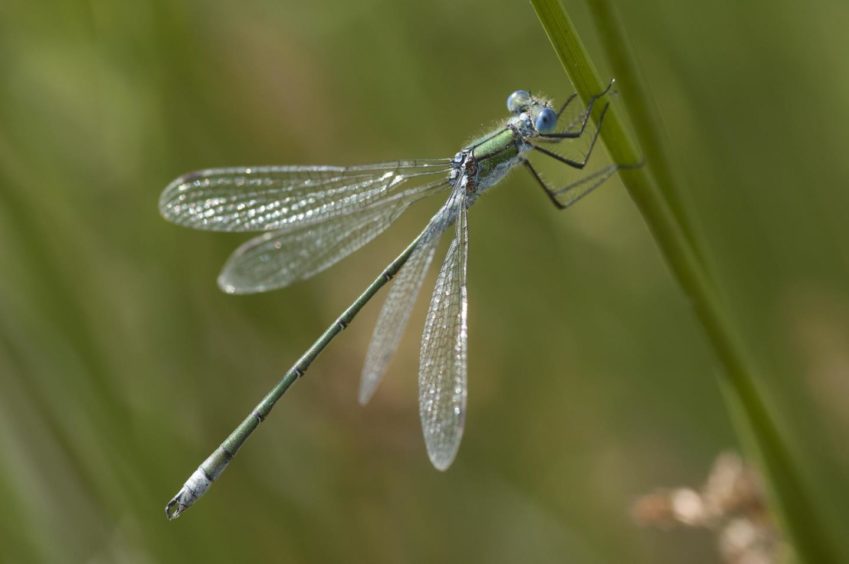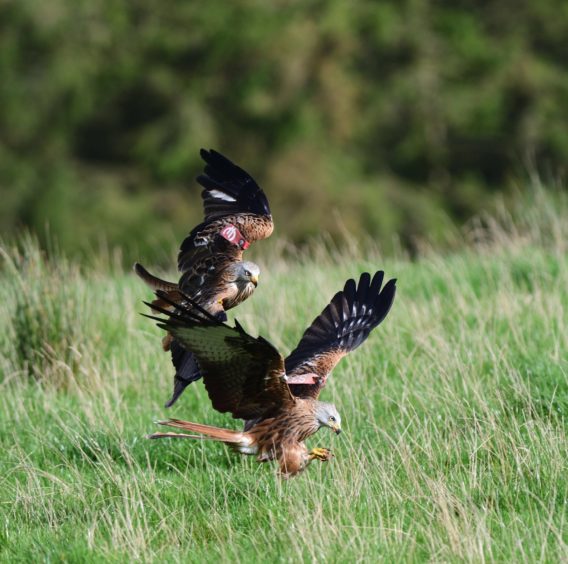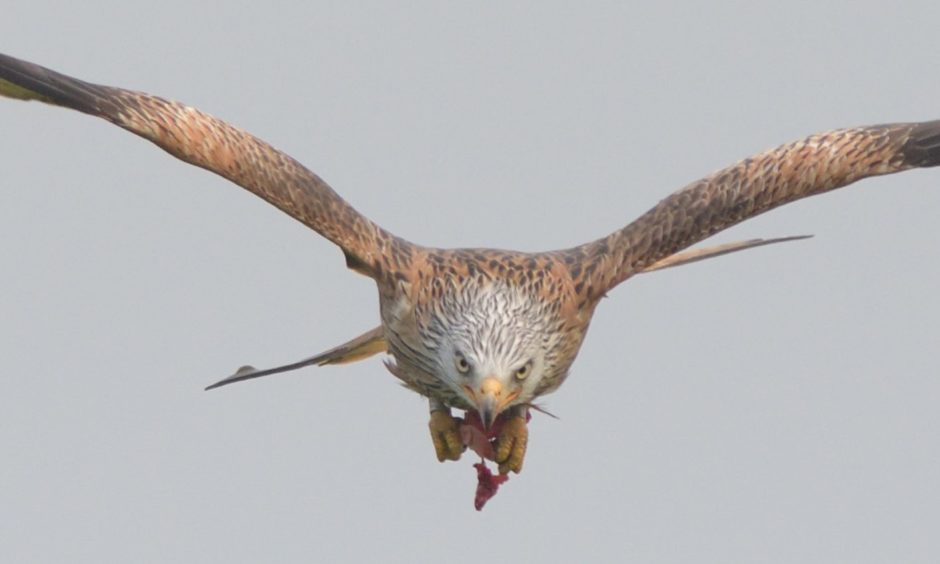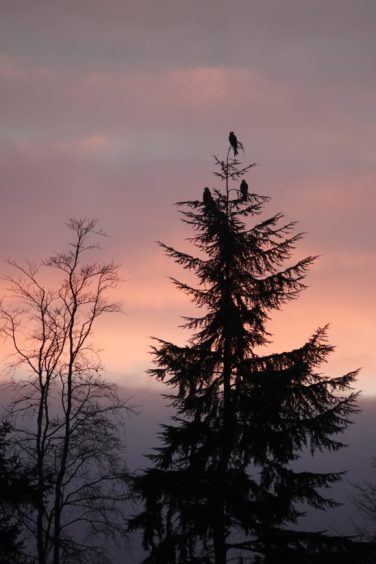Michael Alexander speaks to Tom Bowser – the man at the forefront of the Argaty Red Kite project in Stirlingshire which is hoping to act as a beacon for other rewilding projects across Scotland.
Soaring gracefully through the bright summer sky, their bowed wings out stretched and their long forked tails aiding their effortless agility, the long shrill shriek of red kites drifts magically through the air as they swoop for food in the sun-baked field below.
For centuries, red kites were Britain’s most common bird of prey.
But by the early 1900s they’d been wiped out in Scotland and England following centuries of ruthless persecution.
Argaty Red Kite project launch
Then, in 1996 when kites from a neighbouring reintroduction project appeared in the skies over their farm at Argaty, near Stirling, Lynn and Niall Bowser invited the world to see and learn about these majestic birds.
Today, it’s Lynn and Niall’s 37-year-old son Tom who runs the Argaty Red Kite project.
If he’s not stomping around every wood on the farm getting “sunburned or soaked” looking for red kite nests, Tom’s doing red kite feeding tours in the afternoons – something that he’s really enjoyed doing again after recent lockdowns.
Yet as he shows off the majesty of these birds of prey to enthusiasts, he’s also hopeful that the project can act as a “beacon” for other rewilding projects in Scotland.
“I’ll never forget the day my dad came in and said he’d seen kites flying above the farm,” says Tom, who was just 12-years-old when the red kites first appeared in 1996.
“My dad had been with the army in Africa and he’d seen black kites which are quite closely related when he was on his tour there.
“He obviously realised what he’d seen here weren’t a southern hemisphere black kite.
“So he called up the RSPB and sure enough they were starting this top secret re-introduction on the two estates neighbouring here which nobody apart from them, those estates and Scottish Natural Heritage as they were then knew about.”
Circle of trust
Tom explained that Argaty was admitted to the secret project’s “small circle of trust”.
The kites seemed to like it on the farm, and from 1998, just a couple of years after the first birds were released, the estate was home to the first Central Scotland hatched chicks for over a century.
“When we had the territorial pair, it just seemed to have a bit of a magnetic effect on the other kites that were being brought over from Germany and released,” he says.
“Suddenly we had a whole load of them.
“Birdwatchers came up wanting to see them. We don’t really know how word spread except for the fact that kites are a very tolerant bird – very tolerant of people.
“So once they are there they are fairly obvious and just more and more people came up wanting to see them.”
The RSPB had been coming out and doing some feeding near nest sites to make sure the chicks got enough food to grow up healthy.
Tom’s parents then took it on from them and opened up the project, inviting people to visit.
In search of a career
Tom hadn’t always intended to work in farming.
Growing up on the farm, which has been in his family since his great great grandparents, he describes his childhood as “lovely”.
He had a lot of freedom to explore and roam. At that time, his dad, who worked “bloody hard”, ran the farm with a shepherd.
When Tom left home aged 18 to study history at Glasgow University, he did primary school teaching for a year and dabbled with freelance journalism – writing a few features for the Scotsman and The Herald.
With Tom unable to secure regular work and “struggling to make ends meet”, however, his dad invited him back to work on the farm in 2009.
After almost a decade working on the livestock farm and the Red Kite project in tandem, Tom took on the project and decided to dedicate his family’s land to conservation.
Taking over
He took over Argaty Red Kite in 2017 and won a Nature Tourism Award the following year.
Today there are thought to be at least 100 breeding pairs of red kites in Central Scotland out of 400/500 pairs across Scotland.
It’s heading in the right direction – albeit a “drop in the ocean” compared to the numbers that existed back in the day, says Tom. Records show that in days gone by, a gamekeeper might kill 100 red kites per year on a single estate.
But with scare stories emerging recently about red kites stealing sausage rolls and custard creams from tourists in built up areas of England, why were red kites wiped out in the first place?
Centuries of persecution
“I think a lot of it was just wrong information,” says Tom who describes the red kite call, for him, as “the sound of home”.
“People had been struggling for survival for centuries, battling it out with predators for all that time. “You had that low level killing rumbling on since people first came to Britain.
“But with the Highland Clearances and the growth of sheep farming, that’s when things started to accelerate.
“In the Victorian era when you got the growth of the railway network and the growth of shotgun technology, suddenly you get the growth of shooting estates and from then it was this slow race that had been running for centuries and people started wiping out everything.
“Anything that killed anything was being killed.
“But it’s sad about the kites because they are not really a threat to anything that people would be that interested in.
“Certainly there would be no commercial interest. The sort of things they hunt would be insects, rodents, that sort of thing. They are more scavengers than anything else.”
Release of new book
In his new book ‘A Sky Full of Kites: A Rewilding Story’, Tom interweaves the history and lore of the red kite with the story of a specific place.
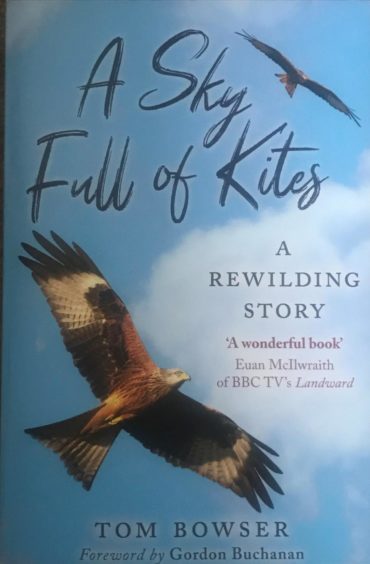
It’s a family story, a story of conservation agencies and charities, one of hard work, dedicated volunteers, red squirrels and other animals.
There’s a long way to go with the project, but he’s pleased red kite numbers are on the rise and taking back old territories.
At the farm, where the livestock operation is now run by tenant farmers, there’s a focus on trying to produce food in a sustainable way.
The other aim is to produce as much habitat as they can for wildlife.
“We’ve been planting a lot of native woodland, sowing wild flower meadows and digging new ponds,” explains Tom.
“We are up to about 16 ponds on the place now.
“We are just trying to show, I guess, it doesn’t have to be about old fashioned food production ideas.
“You can do both. You can produce food and you can still afford to make a little room for the wild animals as well.”
Environmental story of hope
While the last 15 months have been tough, there’s no doubt that the return of public visitors to the project has seen interest continue to grow.
“It’s like that old cliché,” he says. “The more runs you make the more goals you score. The more we try and push it and promote it, the more traction you are getting.”
However, Tom believes another reason is simply that, during a time of bad news and environmental doom warnings, here is an environmental story that gives a little bit of hope – a story of a bird that was extinct doing really well on an estate that’s trying to promote a different way of doing things.
Running in tandem, the Argaty Red Squirrels project is also proving successful.
It was launched in 2018 when Tom was looking to expand the business.
Tom explains that the estate used to be “grey squirrel only”.
However, a few years ago, their old head ranger signed them up for a grey squirrel culling scheme.
The result has been the return of red squirrels into their once native territories.
“It’s not the nicest thing, but basically if you have greys you don’t have reds,” says Tom.
“The reds tend to die out in the most horrible way. They starve to death because they are pushed out of the territories or they catch this horrible squirrel pox disease.
“It’s grim. A bit like myxomatosis in rabbits – they just dwindle away and die a horrible slow painful death.
“Basically we started doing this live trapping of grey squirrels. If you catch anything else you let it go, and if you catch a grey you shoot it!
“The reds have started to come back in now that the territories have become vacant.”
Squirrel hides and ponds
Opening the squirrel hides has made all the difference from a business perspective. Instead of people coming for a couple of hours to see the kites, they might stay for the whole day when the squirrel experience is factored in.
It’s also helped finance new ponds and nature walks, and Tom has started writing to authors and wildlife charities to work together on collaborative projects.
The kites are fed wild animal remains. It could be roadkill or venison if local keepers are doing deer culls.
But given they are only receiving a “weight of a rabbit’s worth” of food each day, there’s no danger the top-up feed will lead to the kites becoming dependent.
“Basically kites are always following people and always trying to get food that people supply them either intentionally or unintentionally,” he says.
“If they are not here they are likely to be near busy roads, train tracks, shooting estates – those kind of places, all of which are fairly dangerous for them in their own ways.
“So we think a wee feed here just to keep a small number of them going is a safer way of doing that than them going en masse to these treacherous places.”
Are red kites a threat to humans?
Tom shakes his head when he hears of the recent stories from Henley on Thames of red kite “stealing” food from people.
With the explosion of the English population over the decades, conflict between wildlife and humans was inevitable, he says.
In Scotland, where populations have remained more static, he says it’s different.
It does sadden him, however, that many people seem to have lost touch with the nature that was once part of our ancestors’ every day lives.
“To me I just kind of find it quite sad that British people find it so difficult to co-exist with wildlife and that because something is doing well there must be ‘too many’ of them,” he says.
“That kind of mind-set…I think these birds should be a sign of hope that we could actually claw things back.
“We know Britain is one of the most nature depleted countries in the world.
“Knowing that, to then be complaining that there are too many of anything is just sad.”
Tom believes the likes of Extinction Rebellion and Greta Thunberg have really made people pay attention to environmental issues.
However, he thinks there’s “a hell of a lot” still to be done.
Argaty a ‘beacon’ of hope
He genuinely hopes the Argaty projects can act as a beacon of hope to other, sometimes controversial, rewilding stories.
“I hope that’s the case,” he says.
“I mean reintroducing birds seems to have been an easier thing than reintroducing mammals has proved to be – albeit the sea eagles have had some impact on peoples’ lives. That’s not been such plain sailing.
“It still seems that bringing birds back is one thing but it’s harder to do with mammals.
The situation with beavers in Scotland has been the perfect example of that. It continues to be so thorny.
“It’s hard to think about the other things that are necessary to being back other animals that redress the balance.
“But I hope that if we can make the case for kites and why they are good and why it’s important to have them back, that that will act as a stepping stone and prompt more people to think about how we can improve the overall eco-system and what other things might also return.”
*A Sky Full of Kites: A Rewilding Story by Tom Bowser, published by Birlinn, is available now priced £14.99.
